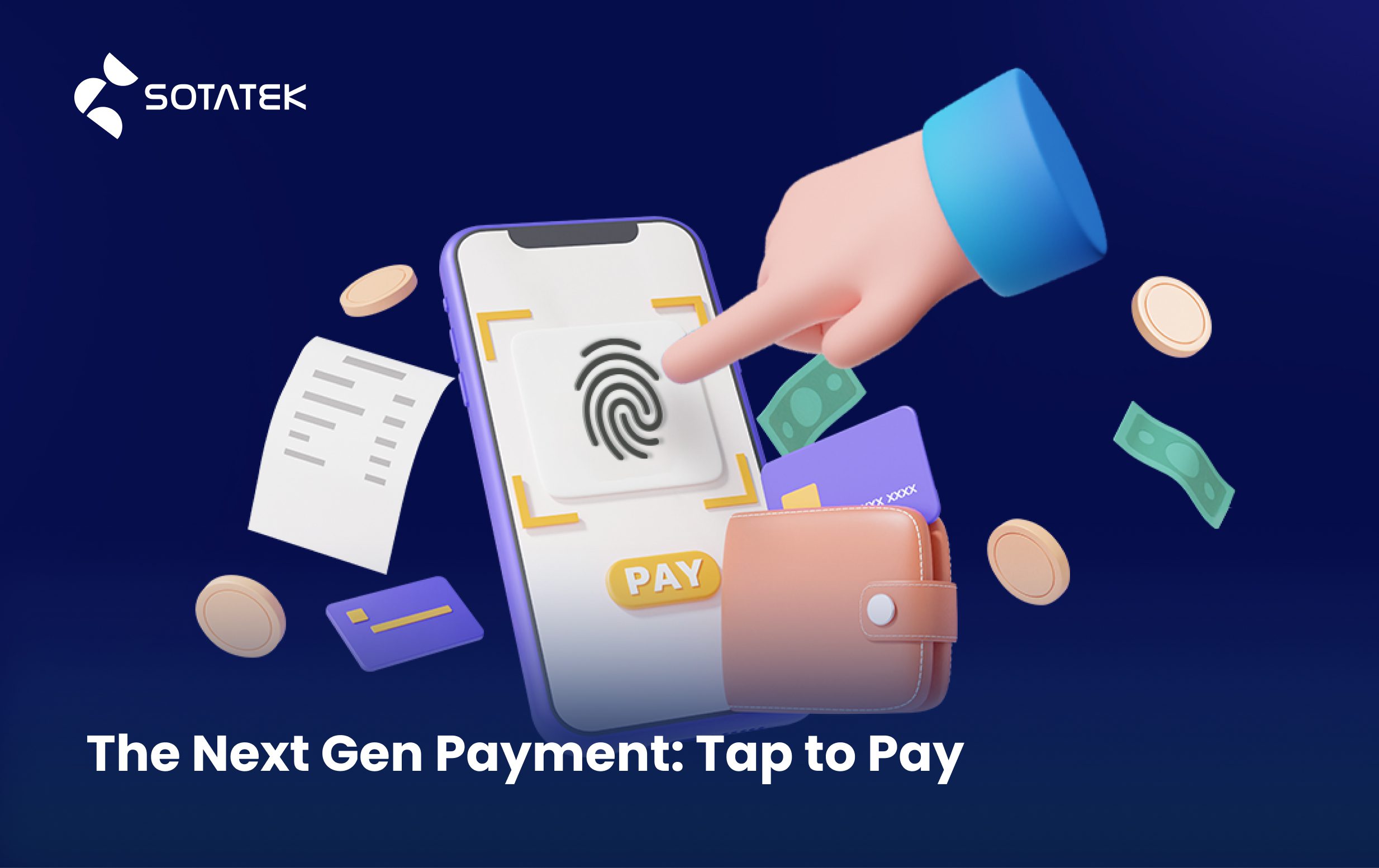The payment method is continually evolving, transitioning from cash payments to credit/debit cards and now expanding into digital options like Tap to Pay. A Mastercard survey indicates that over half of Americans now embrace contactless payments. Furthermore, the contactless payments sector, valued at $13 billion, is projected to nearly quadruple by 2026.
Apparently, businesses that hesitate to apply this latest contactless payment method risk falling behind and experiencing a decline in sales. By contrast, offering tap to pay means your business can process more transactions in less time compared to conventional payment methods, increasing turnover and allowing customers to complete their purchase faster. So, before stepping into this game-changing payment method, let's dive into this blog post below to know all about the Tap to Pay.
1. What is Tap to Pay?
Tap to Pay (also referred to as Tap on phone or more specifically, tap to pay on Iphone or Android) is a new contactless payment technology. At its core, this payment method empowers customers to execute transactions with a mere tap - either a contactless card or payment-enabled mobile or wearable device over a contactless-enabled payment terminal. Tap to pay uses short-range wireless technology called near-field communication (NFC) to make secure payments.
For example, Revolut, a well-known global financial super app, recently launched Tap to Pay on iPhone. This integration seamlessly merges with the Revolut iOS app for Pro account holders, encompassing sole proprietors and small business owners, as well as the Revolut Business iOS app tailored for larger enterprises. This innovative feature enables the acceptance of in-person, contactless payments directly through an iPhone, eliminating the requirement for supplementary terminals or hardware.
So, How to use Tap to Pay?
Customers will experience 3 main steps: Look, Tap and Go
- Look: Check for the Contactless Symbol on the store’s checkout terminal.
- Tap: When prompted, hover your card or mobile/wearable device within a few inches of the Contactless Symbol on the checkout terminal. Depending on the terminal, you may tap on, above, or below the screen.
- Go: Your payment is securely processed in seconds. Once your payment is verified, you're all set to proceed!

Customers will experience 3 main steps: Look, Tap and Go
2. How does Tap to Pay work?
Tap to pay functions similarly to chip payment cards at point-of-sale (POS) terminals. By utilizing NFC (near-field communication), the card or device transmits a secure, one-time token to the payment terminal, specific to that particular transaction. This wireless technology ensures secure transactions through contactless-enabled cards, wearable devices, and payment-capable mobile applications. Customers can initiate payments by simply tapping, waving, or hovering their card or device near a payment terminal.
As NFC technology is typically employed by chip card readers, if your business already supports chip card payments, it's highly likely that you can seamlessly integrate tap to pay without the need for extra efforts on your part.
3. Benefits of Tap to Pay
a. Speed and Convenience
Compared to other payment methods, Tap to Pay offers significantly faster transactions. There's no need for card swiping or insertion, and you can even skip remembering the PIN. Moreover, you won't cause delays at the checkout by searching for cash or requiring the cashier to count small change. The convenience of Tap to Pay leads to smoother customer experiences and enhanced turnover rates for businesses.
b. Security
Contactless tap to pay cards and digital wallets are one of the most secure payment methods, protecting your transaction through three key mechanisms:
- Tokenization: This process replaces your bank details with a sequence of randomized characters. Your unique token prevents hackers from stealing or replicating sensitive information.
- Encryption: Each transaction undergoes encryption that changes every time. Even if hackers obtain an encryption code, it's rendered useless since it was valid for a single transaction only.
- Two-factor verification: Employing a PIN or Face ID adds an extra layer of security. While not universally implemented, services like Apple Pay prompt users to validate each transaction with Face ID.
Besides, the this method boasts higher success rates on the initial attempt compared to magstripe or EMV chip cards. The latter can require multiple tries and are susceptible to wear and tear from frequent use due to their physical components. In contrast, tap to pay cards, smartphones, and wearable devices with digital wallets might encounter occasional failures and mechanical issues, but the wear and tear is notably reduced compared to traditional credit and debit cards.
c. High Consumer Demand
The popularity of this contactless payment is growing rapidly, alongside customer expectations. Customers now do not need to bring anything but their digital wallets. A study revealed that 15% of digital wallet users frequently leave their conventional wallets at home, and 11% contemplate doing so when they know they can rely on a digital wallet for their transactions. Offering the convenience of tap to pay has become the new standard for businesses of all scales seeking to remain competitive.

Offering the convenience of tap to pay has become the new standard for businesses of all scales seeking to remain competitive
This method is particularly favored by the younger generation. Research indicates that 65% of millennials and 57% of Gen Z individuals utilized a digital wallet in 2021, marking a significant rise from 59% and 50% respectively in 2020.
4. Final Thoughts
To sum up, Tap to Pay is a big step for easier and safer payments. Its speed, accessibility, and enhanced transactional safety will bring us into a simpler and more digital shopping age.



